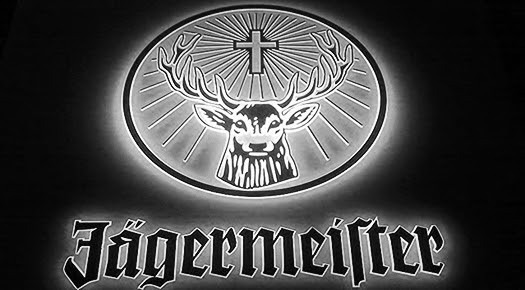
Photo Credits: Flickr
Jägermeister is a digestive made with 56 herbs and spices whose recipe has not changed since its creation over 75 years ago. It is still served in its signature green glass bottle. The logo of the Jägermeister brand is not immoral or religiously offensive, the court in Switzerland has ruled. Actually, there was a case seeking to restrict Jägermeister’s use of the logo solely to alcohol bottles and items of clothing. The Swiss Federal Institute of Intellectual Property demanded the restriction on the grounds that the image was offensive to the religious leanings of some consumers. The logo features a white cross, radiant with green light, floating between the antlers of a stag.
The Jägermeister’s logo has its origins in a Christian tale about a man (Hubertus) who preferred hunting to praying and pursued all available pleasures.
One Good Friday, having neglected his church attendance in pursuit of a particularly splendid stag, Hubertus beheld a crucifix suspended between the animal’s antlers and heard the voice of God warning him that, unless he changed his godless ways, he would surely go to Hell. Hubertus heeded the voice and renounced all his wealth to rise through the ranks of the priesthood, ultimately becoming the first Bishop of Liege. He devoted himself in particular to converting the pagans and bandits living in the Ardennes Forest, impressing them with his skill at archery to convince them to give his religious convictions a fair hearing.
To this day, St. Hubertus is considered the patron saint of hunters, hunting dogs, archers, and forest-dwellers. The International Order of St. Hubertus is a knightly organization still in existence today; Ordensbrothers, as they call themselves, are active hunters and fishers who share a commitment to wildlife and habitat conservation.
Judges decided that the “intensive” use of the image by Jägermeister had “weakened its religious character” over time, and nobody was likely to be offended. That means that the company is free to use it for all promotional activities and products in Switzerland including cosmetics, mobile phones, or telecommunications services.
